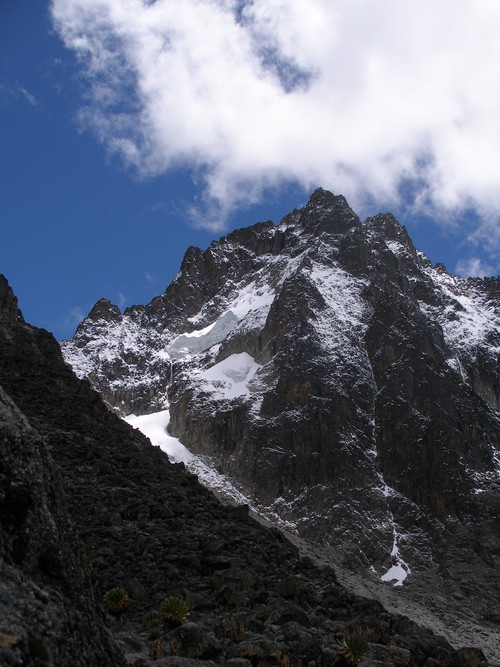The mountain itself a volcanic pile consisting of Precambrian age Trachytes, Basalts, Phonolites,Kenytes, Rhomb porphyries. From your high school geography you probably know it’s a composite volcano and for those who avoided geography then now you know. Its plug is composed of nepheline syenite and phonolite in ring structure. Here are some of the peaks and their respective heights in meters
Batian 5199m, Nelion 5188m, Point Lenana 4985m, Point Pigott 4957m, Point Thomson and Thomson Flake 4955m, Point Dutton 4885m, Point Melhuish 4880m, Point John 4863m, Point Peter 4757m, Midget peak 4700m.
Photos courtesy of John Jammin
 |
Rough route overlay of the Normal Route on Nelion, with key
features marked.
|
 |
Mount Kenya as seen from the Hall Tarns on the Chogoria
route. Point Lenana is on the left hand side and the twin summits of Nelion and
Batian are on the right.
|
 |
South side of Mount Kenya as seen from the head of the
Teleki valley. Batian and Nelion are the twin summits and Point John in the right forground.
|
 |
| glaciers atop Mt Kenya |

No comments:
Post a Comment